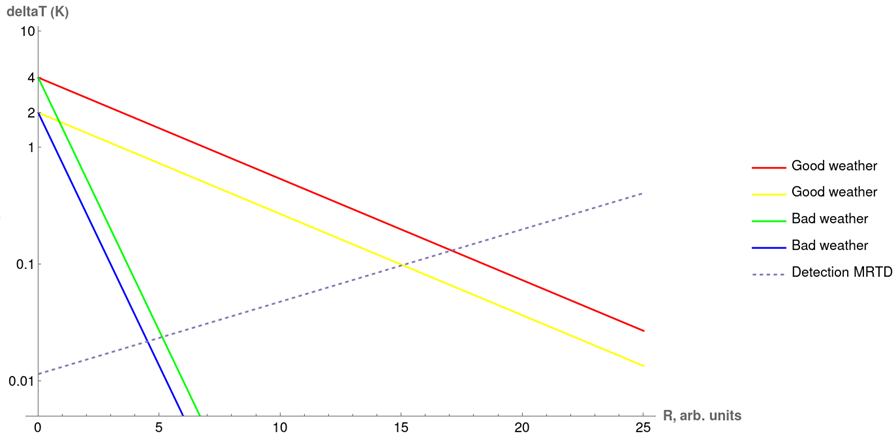Speaker
Description
Contemporary research in defense technology focuses extensively on concealing various objects from infrared (IR) reconnaissance. Numerous camouflage coatings are available in the market, designed to mask IR radiation emitted by targets. Manufacturers often claim that these coatings significantly reduce the mean apparent temperature difference (ΔT) between the object and its background. However, a critical scientific question remains: how does the reduction in ΔT correlate with the actual decrease in maximum detection range (MDR) achieved by thermal imaging systems?
A wide range of cooled and uncooled portable thermal imagers exists for the 3-5 μm and 8-12 μm spectral ranges. Their detection capabilities are constrained by both spatial resolution and thermal sensitivity, characterized by the noise equivalent temperature difference (NETD). To estimate the MDR reduction due to target temperature contrast masking, it is valuable to evaluate the MDR for several commercially available thermal imagers at distances where their sensitivity for chosen object size is not restricted by spatial resolution. According to NATO Standard STANAG 4347, the MDR for a target can be determined by graphically solving an equation. The left-hand side of this equation represents the simple exponential decay of ΔT with distance, while the right-hand side denotes the minimum resolvable temperature difference (MRTD) of the thermal imager, which is also dependent on distance and target dimensions. The MRTD for a high-resolution thermal imager in the 3-5 μm range was obtained from literature [1].
Our modeling aimed to assess how a 50% reduction in target ΔT affects the MDR and to evaluate the significance of this change relative to potential variations due to adverse weather conditions. We modeled targets with ΔT = 4 K (uncamouflaged) and ΔT = 2 K (camouflaged), using atmospheric absorption coefficients of k = 0.2 1/km (good transmission conditions) and k = 1 1/km (limited transmission conditions). The dimensions of the test target were set at 1x1 m2.
The modeling results for the 3-5 μm range are presented in the Figure 1. The MDR is determined at the intersection point of the ΔT and MRTD curves. Our findings indicate that a 50% decrease in ΔT has only a slight impact on MDR reduction under any weather conditions. Consequently, effective IR camouflage coatings should provide a substantially greater reduction in the observed temperature difference between the target and background. Furthermore, our modeling revealed that the MDR for a target with a fixed ΔT can vary by several times depending on weather conditions. Similar modeling was also conducted for the 8-12 μm range.
This study was supported by NRFU project #2023.04/0026.
- Barela, J., Firmanty, K., & Kastek, M. (2021). Measurement and analysis of the parameters of modern long-range thermal imaging cameras. Sensors, 21(17), 5700. https://doi.org/10.3390/s21175700.

Fig.1. The modeling results for the 3-5 μm range MDR for variable weather conditions, for camouflaged and uncamouflaged target.
